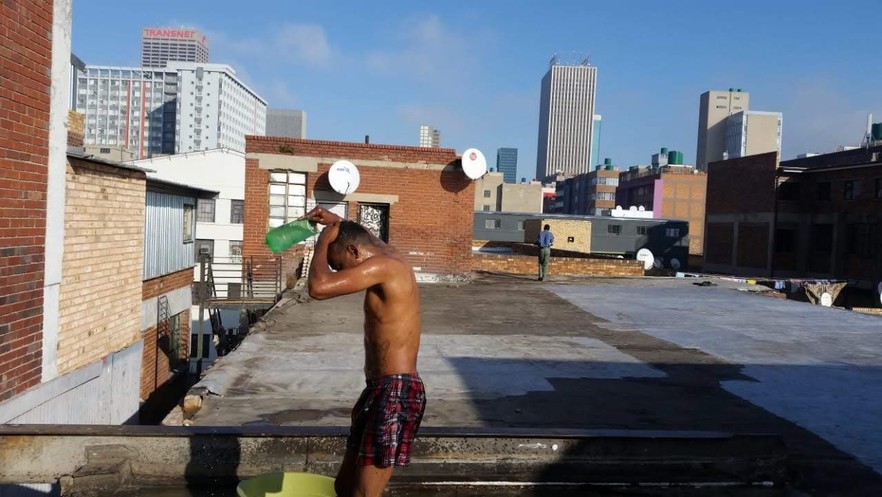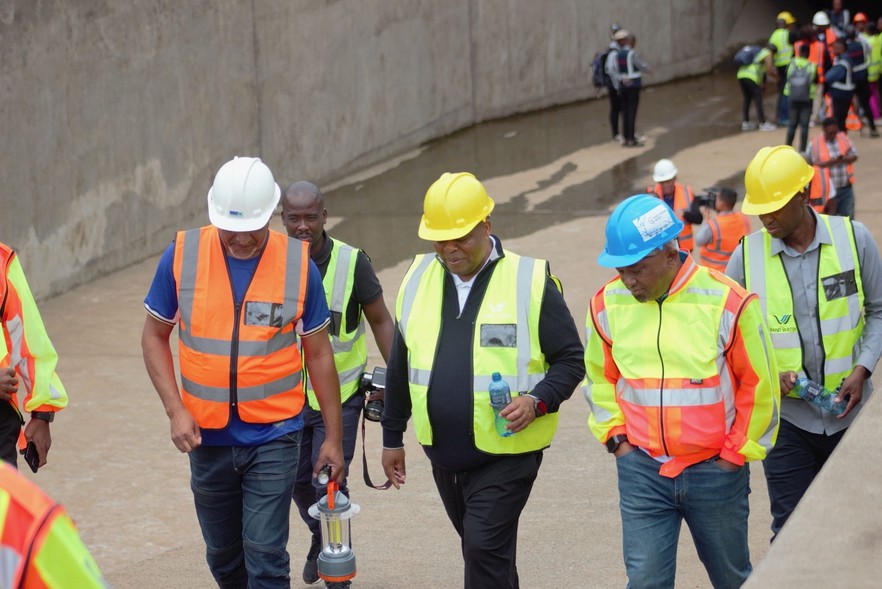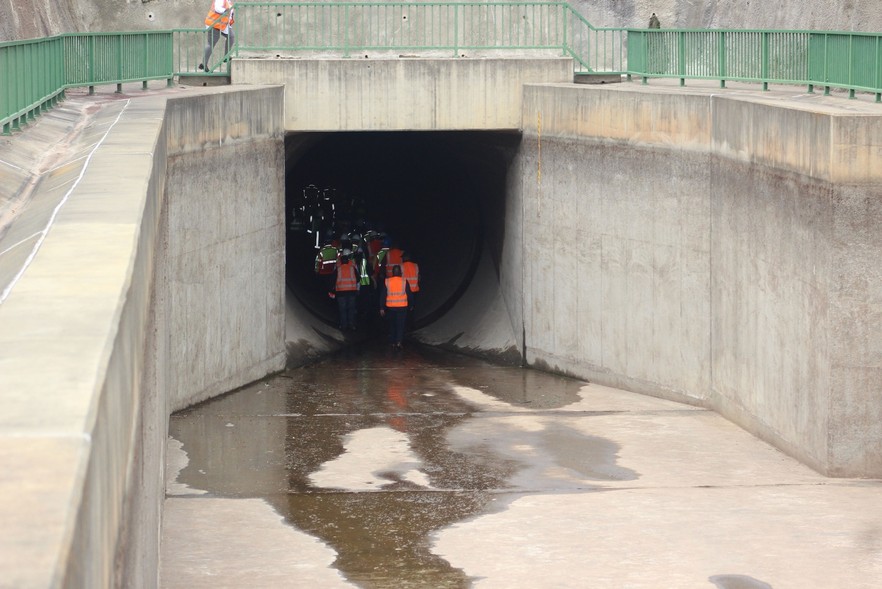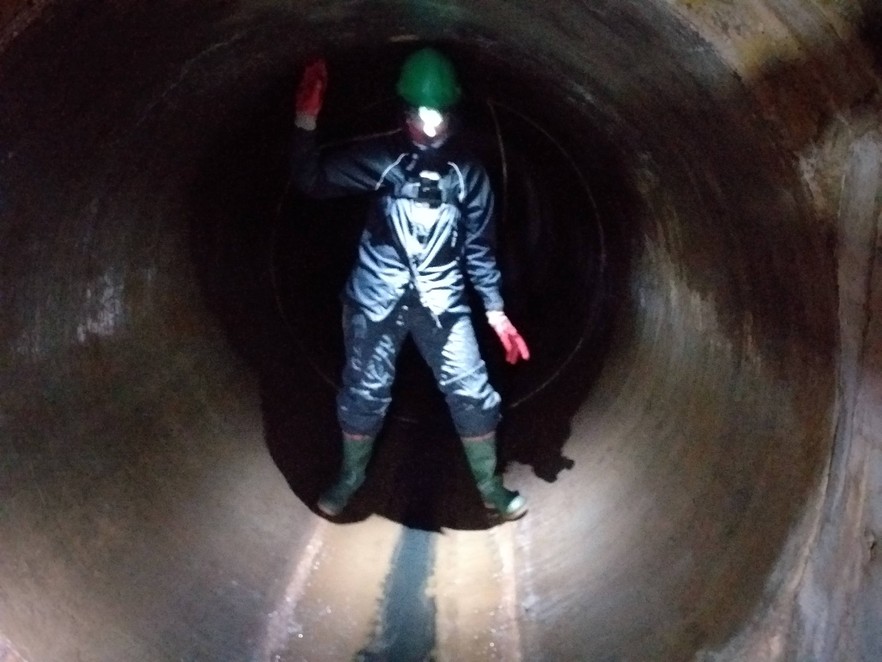Johannesburg Water: tales of woe
At least maintenance on the Lesotho Highlands Water Project is on track
A man uses a bucket to wash on a Doornfontein rooftop in Johannesburg. Photo: Sean Christie
South Africa’s urban highveld is in the grip of a water crisis, largely due to poor management at the municipal level, but with some legitimate concerns over the water levels in dams that supply Johannesburg and surrounds.
The daily and sometimes hourly news reports on water problems can be difficult to follow and interpret. To assist readers, GroundUp has produced a summary of water highs and lows from the month of November.
Bulk water supply
As far as bulk water supply is concerned, things appear to be going according to plan.
On 15 November, the Department of Water and Sanitation (DWS) invited media to inspect the maintenance works that are taking place on the South African parts of the Lesotho Highlands Water Project (LHWP), near Clarens in the eastern Free State. Water and Sanitation Deputy Minister David Mahlobo said that the maintenance shutdown of the LHWP, which is entering week eight of the planned six-month stoppage, has caused no issues for water supply to Gauteng.
Deputy Minister of Water and Sanitation David Mahlobo inspects the tunnel that normally delivers water to South Africa from Lesotho. Photo: Tladi Moloi
“Before the shutdown, there were preparations on the ground to make sure that the system is fully recharged. In other words, we had to be able to harvest the water [from the LHWP] and as far as possible, that did happen. We know that sufficient water was received. The crises in Gauteng have nothing to do with this system. We have spoken about what is happening in Gauteng, and we don’t want to talk about it here,” Mahlobo said.
It was eerie walking inside Delivery Tunnel North which is normally full of water that comes down from Lesotho. The tunnel feeds water into South Africa’s Ash River, which enters the Liebenbergsvlei River, which feeds into the Vaal Dam, and from here water is extracted, treated and pumped to water reservoirs in Johannesburg and surrounds.
The Lesotho Highlands Water Project has been stopped for six months to allow maintenance work in the transfer tunnels. It is the first time that members of the public have been allowed to walk inside the main delivery tunnel since the project was officially opened in 1998. Photo: Tladi Moloi
In addition to supplying the Vaal Dam, the Ash and Liebenbergsvlei rivers supply water to the local municipalities of Dihlabeng, Nketoana and Mafube in the Free State, and according to Mahlobo enough water has fallen in the catchments of these rivers to ensure that these communities receive water during the LHWP stoppage period.
The maintenance work on the South African side of the LHWP is being overseen by the Trans-Caledon Tunnel Authority (TCTA). According to Mike Croeser, an engineer working on the maintenance project, “the main job is sandblasting and recoating of all the steel liners within Delivery Tunnel North … and there are some small repairs of precast concrete parts of the tunnel, but these are very minor”.
Croeser said he was sure that the project will be completed within six months. Mahlobo added that if the work is not completed within six months, “a contingency plan will ensure an additional three months’ water supply”.
Most of the LHWP maintenance is taking place in Lesotho, overseen by the Lesotho Highlands Development Authority (LHDA).
On 17 November the level of the Vaal Dam stood at 31%, according to DWS data. Islands have appeared in the dam, and if the level continues to drop graves that were submerged when the Vaal Dam was flooded will start to rise above the water’s surface, a phenomenon that has been repeatedly documented in years when the dam level fell below 30 percent.
“It looks dramatic, but it is all in line with the operating rule of the Integrated Vaal River System, which is to draw down on water from the Vaal Dam until the level gets to 18%, at which point water will be released from Sterkfontein Dam in the Drakensberg,” said water specialist Richard Holden.
Large volumes of leaked water flow into the storm water drains below Johannesburg. Photo: Sean Christie
Municipal water supply problems everywhere
November has been a difficult month for Johannesburg Water, as the chronology below reveals.
6 November: A four-hour electricity outage at Palmiet pump station (following a three-hour outage on 4 November) crippled Johannesburg Water’s ability to supply an enormous area, including Midrand, Diepsloot, Sandton and Alexandra. This happened because Johannesburg Water’s reserves stood at 40%, too low to absorb the break in water pumping.
To pump water uphill from the Vaal Dam to the reservoirs of the urban highveld, bulk water supplier Rand Water relies on four booster stations: Palmiet, Eikenhof, Mapleton and Zwartkopjes.
In June Rand Water embarked on substantial maintenance work at all four booster stations.
An abandoned Water Treatment Works in Alexandra. Photo: Sean Christie
8 November: Johannesburg Water holds an online media briefing, during which general manager of operations Mzakhe Mshweni explains that the water utility’s systems “have more or less recovered” from the Palmiet power interruption, though Diesploot reservoir and Southhills Tower remained impacted, and thus Riverside View, Steyn City and Diesploot remain without water, as well as Linmeyer, South Hills, Risana and The Hills.
Mtsheni said it was Johannesburg Water’s goal “to try and mitigate an incident like this” by ensuring that “we have at least 24-hour reserves within all our systems”. To this end, he said, Johannesburg Water would implement “some aggressive interventions”.
The interventions Mtsheni described are drawn from Johannesburg Water’s 2022 Water Conservation and Water Demand Management Programme, which he said had been escalated, in the hope of stabilising water supply.
Mtsheni said these interventions would include reducing water supply to high water usage areas from 9pm until 5am on a scheduled basis, pressure management (“throttling”) whereby the pressure in systems is reduced at night to prevent regular pipe bursts, and bylaw enforcement to deal with illegal connections on bulk supply pipes.
A Johannesburg Roads Agency employee opens a manhole cover in Doornfontein. Photo: Sean Christie
12 November: Johannesburg Water, in collaboration with the Johannesburg Metropolitan Police Department and SAPS public order police, attempt to disconnect illegal connections in Phumla Mqashi informal settlement in Lenasia South. Media were invited to observe the operation, but the public relations exercise backfired when, as GroundUp reported, angry residents chased away Joburg Water technicians who had come to remove illegal water connections.
14 November: Johannesburg Water announces that water pressure will be decreased by 50% overnight from 9pm to 4am in order to replenish water reserves. No date is given for the end of this curtailment, which adds to the level 1 water usage restrictions that were put in place in October that prohibit the watering of gardens, the washing of cars and the filling of swimming pools between 6am and 6pm.
15 November: The operation to disconnect illegal water connections continued in Emdeni, Soweto. During Johannesburg Water’s 8 November briefing, Mtsheni explained that “eight or nine informal settlements” were being targeted by the operation to disconnect illegal connections, “most of them in the South, on the Lenasia, Orange Farm and Ennerdale systems”.
But, he noted, illegal connections do not only occur in informal settlements. “We’ve got businesses, we’ve got institutions and we’ve got [housing] estates that are on the list [and] you will be surprised at the amount of water that they are consuming.”
The Ash River in the first week of the stoppage of the Lesotho Highlands Water Project. The Ash River runs into the Liebenbergsvlei River, which supplies several Free State communities with water. Photo: Sean Christie
Support independent journalism
Donate using Payfast

Don't miss out on the latest news
We respect your privacy, and promise we won't spam you.
Next: Five years of water shortages in KZN township
Previous: Activists welcome Treasury’s proposed minimum alcohol price
© 2024 GroundUp. This article is licensed under a Creative Commons Attribution-NoDerivatives 4.0 International License.
You may republish this article, so long as you credit the authors and GroundUp, and do not change the text. Please include a link back to the original article.
We put an invisible pixel in the article so that we can count traffic to republishers. All analytics tools are solely on our servers. We do not give our logs to any third party. Logs are deleted after two weeks. We do not use any IP address identifying information except to count regional traffic. We are solely interested in counting hits, not tracking users. If you republish, please do not delete the invisible pixel.







